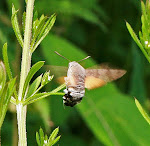Although in this country Cotoneasters are usually grown as garden plants or for amenity decoration they also often spread into the natural environment when bird sown. This is a result of birds eating the ripe berries, the seed of which passes through them undigested and is later spread into a new habitat via their droppings.
+Lundsfield+17.10.09+3236+(Large).jpg)
A single magnificent shrub of Cotoneaster induratus was discovered and photographed (above and below) in a semi-natural habitat in a disused limestone quarry near Carnforth. It was laden with bright red berries and was a most attractive sight. Initially there was uncertainty as to its identity until it was confirmed as this species by Mrs Jeanette Fryer. Unfortunately, the quarry is now scheduled for housing development and even though this is the only naturally-grown representative of the species in the county, it is quite likely to be lost soon.
+Lundsfield+17.10.09+3250+(Large).jpg)
+Lundsfield+17.10.09+3253+(Large).jpg)
In this species the orbicular bright red fruits are slightly hairy whilst the new leaves and stems are much more so.
+Lundsfield+17.10.09+3228+(Large).jpg)
+Lundsfield+new+leaves+17.10.09+3242+(Large).jpg)
Other species of Cotoneaster present at the locality include C. dielsianus, C. horizontalis, C, rehderi and C. simonsii.
.jpg)






No comments:
Post a Comment